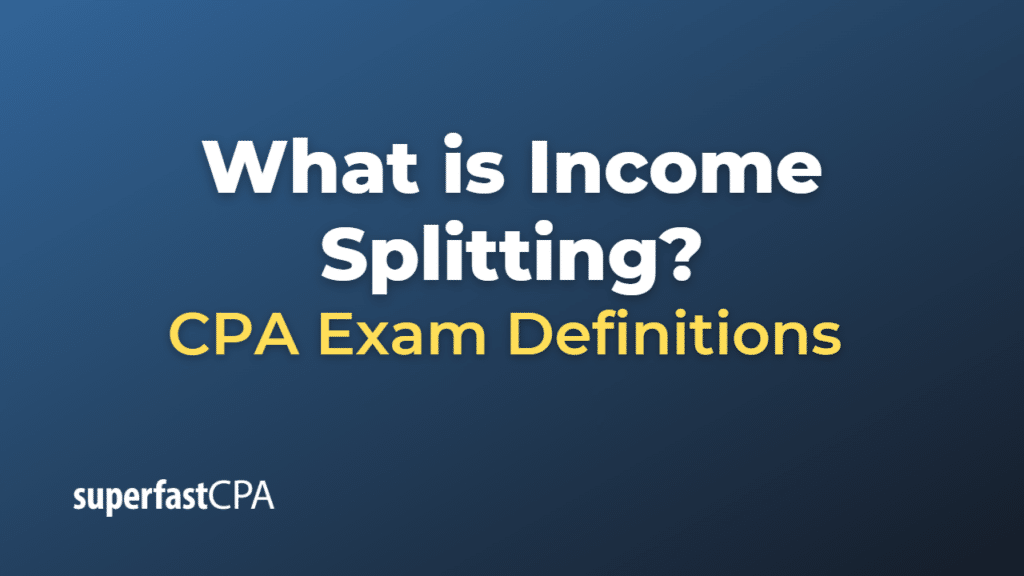Income Splitting
Income splitting is a tax reduction strategy used by families to lower their overall tax bill. It involves shifting income from a family member in a higher tax bracket to a family member in a lower tax bracket.
The principle behind income splitting is based on the progressive nature of income tax systems, where the rate of tax increases as the taxable amount increases. If one member of a family earns significantly more than another, the family’s total tax liability can be reduced by transferring income to the lower earner, who will be taxed at a lower rate.
Common ways to split income include:
- Spousal RRSPs (Registered Retirement Savings Plans): In Canada, the higher-earning spouse can contribute to the RRSP of the lower-earning spouse. At retirement, withdrawals from the lower-income spouse’s RRSP will be taxed at their lower rate.
- Family Business: A higher-earning spouse could employ their lower-earning spouse or children in a family business. The lower earners would pay tax at a lower rate on their wages, and these wages would be a tax-deductible expense for the business.
- Gifts and Loans: In some jurisdictions, income-generating assets can be given as gifts or loans to lower-earning family members. The income these assets generate would then be taxed in the lower-earning family member’s hands.
- Pension Income Splitting: In some countries like Canada, up to 50% of eligible pension income can be transferred from one spouse to the other for tax purposes.
Please note that tax laws are complex and vary significantly by country and even by state or province. Therefore, tax planning strategies like income splitting should be discussed with a qualified tax professional. It’s also important to note that income splitting has been limited in some jurisdictions, including the United States, due to legislation and tax code changes.
Example of Income Splitting
Let’s take an example of a married couple: Alex and Jamie.
Alex is a software engineer earning $100,000 annually, and Jamie is a part-time teacher earning $20,000 annually. They live in a country where the income tax rates are as follows:
- 10% on income up to $50,000
- 20% on income between $50,001 and $100,000
- 30% on income over $100,000
Without income splitting, Alex would pay $20,000 in taxes ($5,000 on the first $50,000 and $15,000 on the next $50,000). Jamie would pay $2,000 in taxes (10% on $20,000). So, the total tax they would pay is $22,000.
Now, let’s assume their country’s tax laws allow for income splitting. If Alex could transfer $30,000 of his income to Jamie, their incomes would become $70,000 and $50,000, respectively.
Now, Alex would pay $14,000 in taxes ($5,000 on the first $50,000 and $4,000 on the remaining $20,000), and Jamie would pay $5,000 (10% on $50,000). Their total tax bill would now be $19,000.
By employing income splitting, Alex and Jamie have saved $3,000 on their taxes.
This is a simplified example, and the real-world application of income splitting can be much more complex, involving various types of income and tax deductions, and is often subject to legislative limits or regulations. Always consult with a tax professional when considering such strategies.













